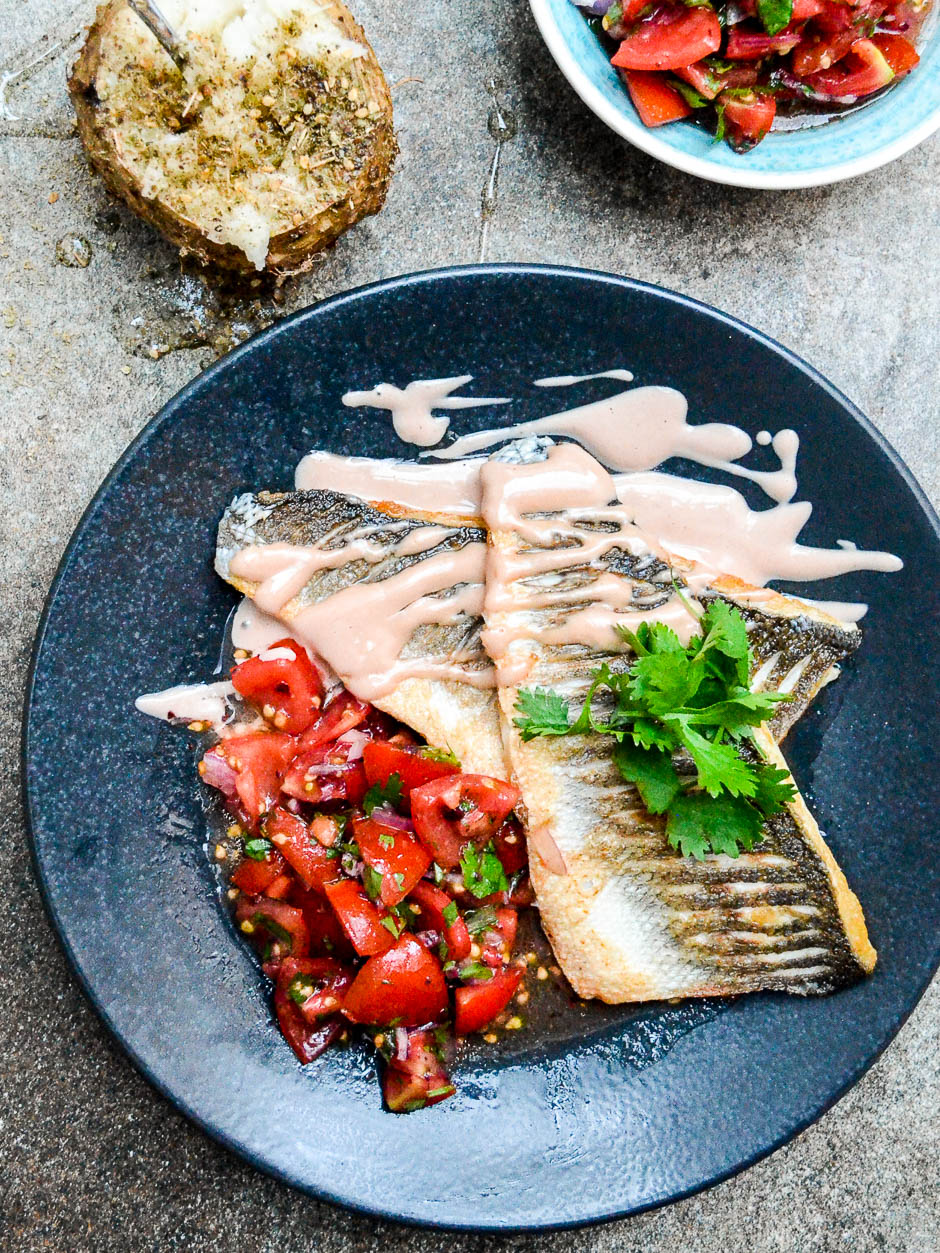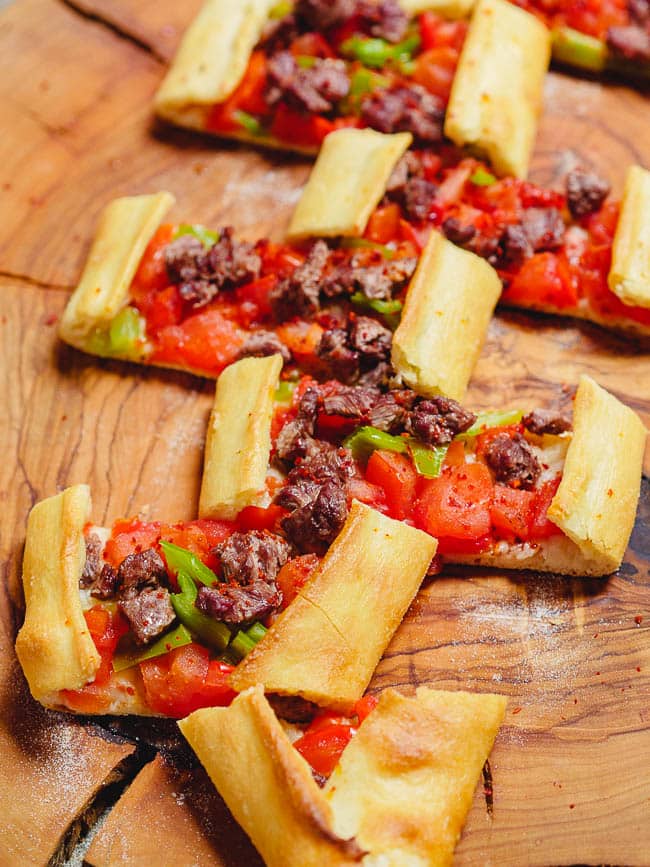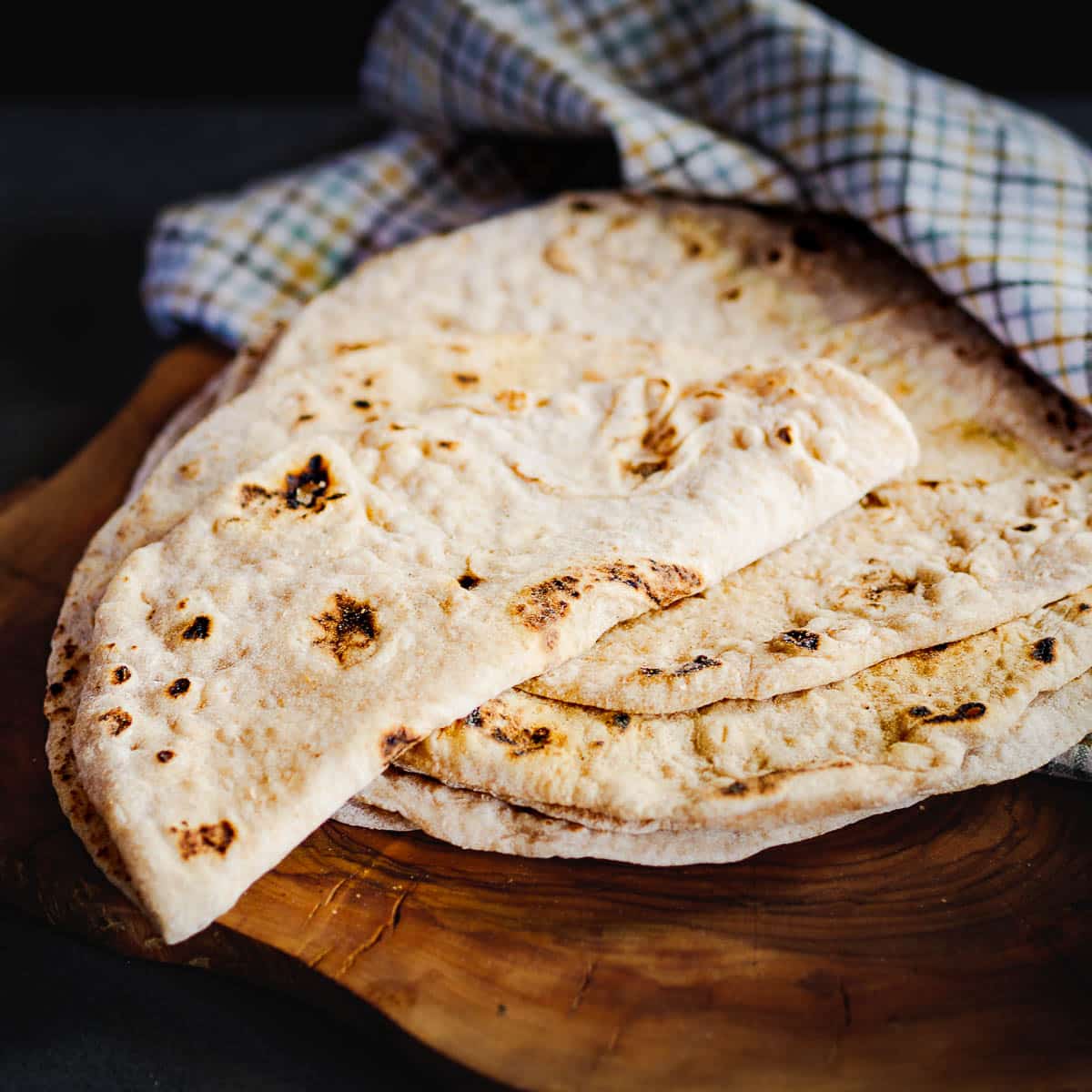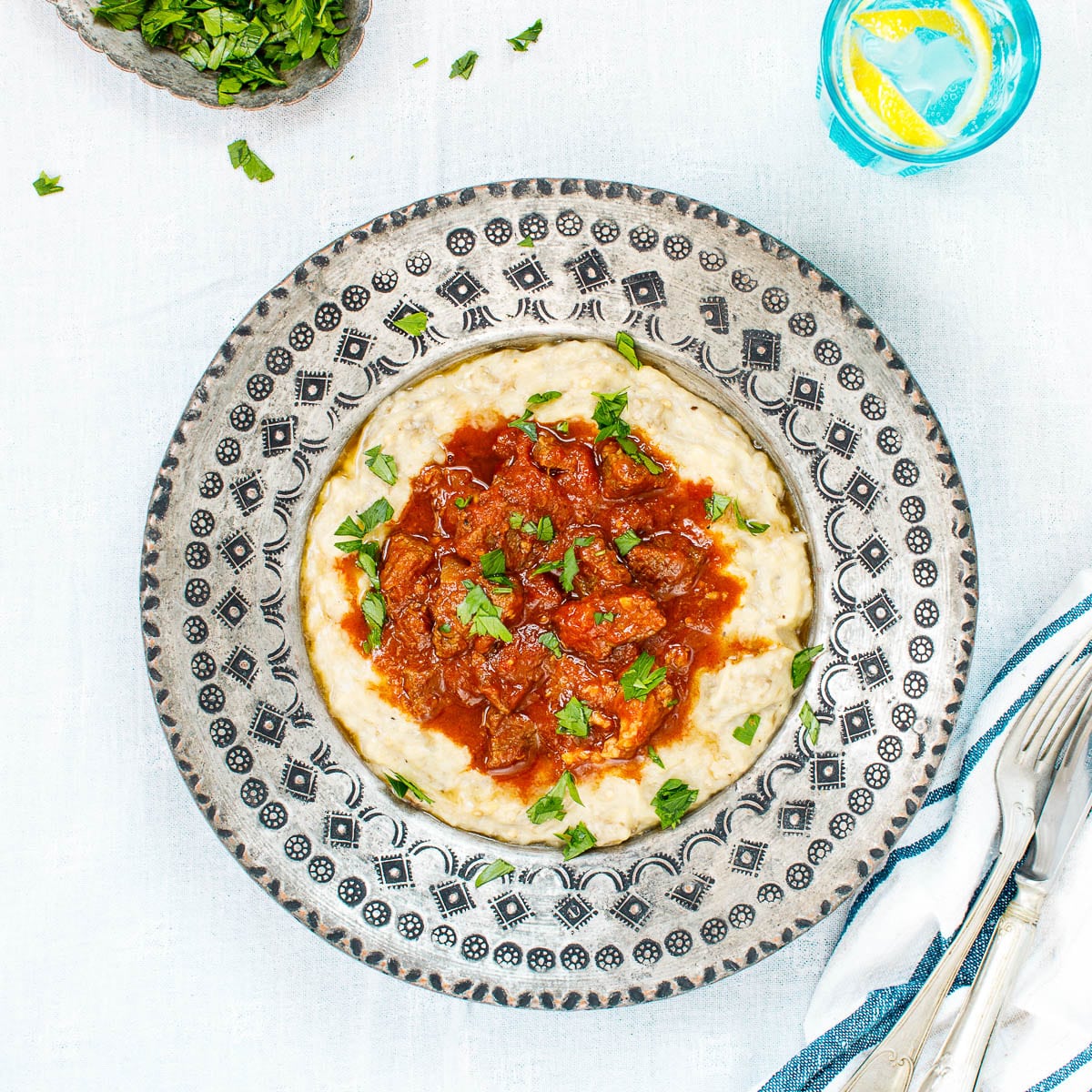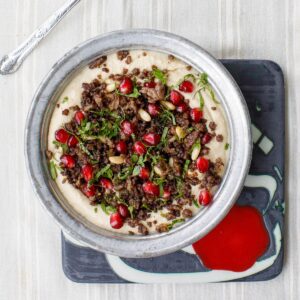Light and healthy dinner packed with flavours from the Eastern Mediterranean! This recipe for sea bass with tahini and tomato salad is perfect for those bright and sunny days.
I never liked fish much as a child. Apparently, that doesn’t fit in with the picture most foreigners have of Norwegians. Surely we eat fish virtually every day right?
That may have been true of coastal fishermen of prior generations, but those days are long gone. These days, Norwegian health authorities have a hard time getting people to eat enough fish.
Seafood in Turkey
I’ve long since grown up and taken a liking to the wonders of the sea. Yet moving to Turkey provided a fresh challenge: The fish sold here is quite different from the large Atlantic species I’ve been accustomed to in Norway and England. No cod, no halibut, no haddock.
Instead, a range of mostly smaller Mediterranean fish: Sea bass, bonito and tiny anchovies. Not unknown to mankind by any means, but certainly fish I’d rarely prepared in my own kitchen before settling in Istanbul.
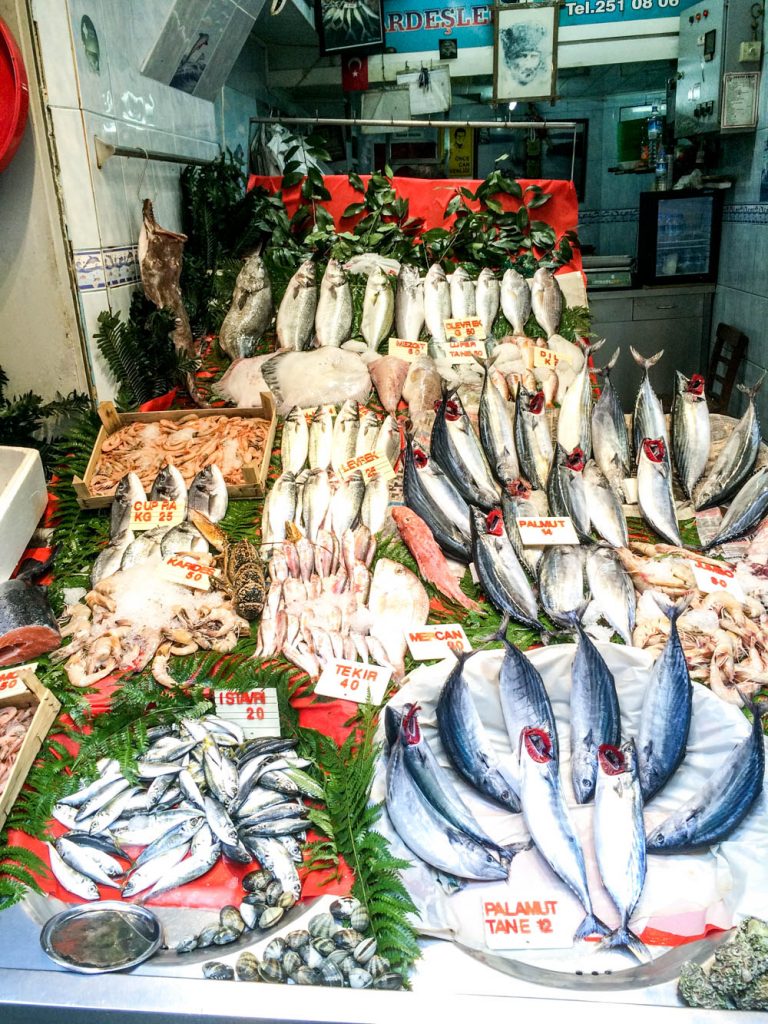
And then there’s the question of heat. The most important thing about seafood is its freshness. There isn’t much you can do to salvage a non-fresh piece of fish.
And to stay fresh, it needs to be kept cool. Really cool. Not quite compatible with Eastern Mediterranean summers. So you better know your source well.
There are many nice things to say about my neighbourhood of Balat, but the quality of fishmongers unfortunately isn’t among them. The selection is small, the hygiene more than questionable.
Seafood was therefore limited to those times when I was out and about, with a good fishmonger nearby my last stop. But even then, the moment of purchase starts a race against the clock to get home before your bags start smelling, well, fishy.
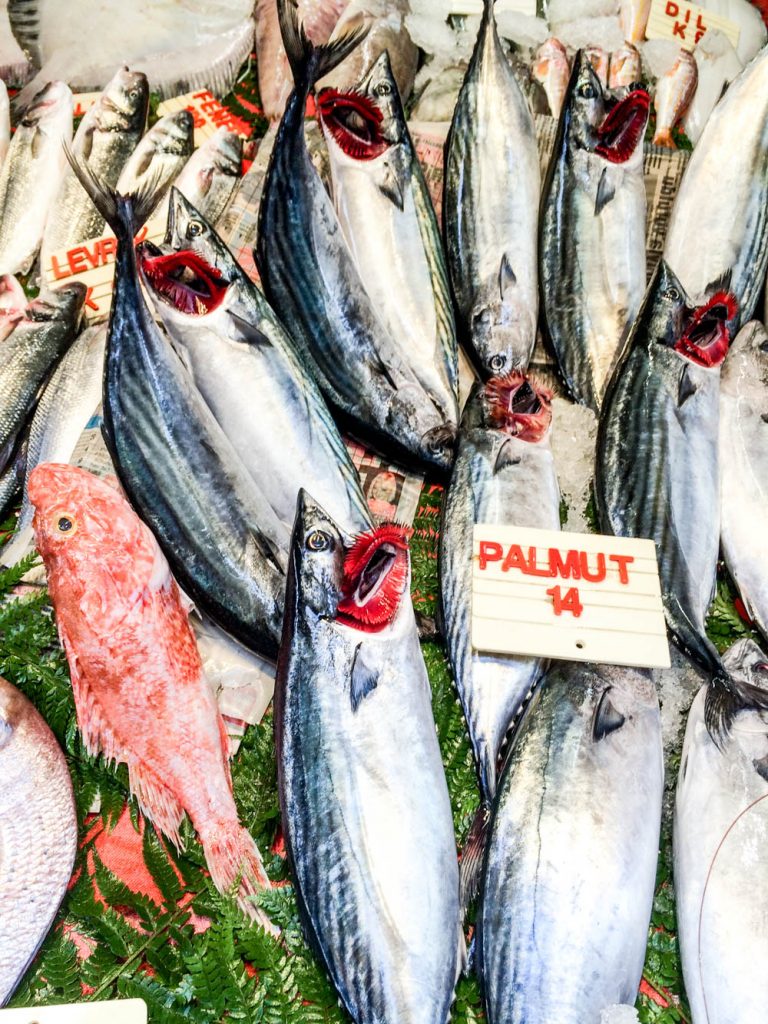
Luckily, the age of the internet has brough new wonders. And so it is that after mostly staying away from cooking seafood at home during my first years in Turkey, I’ve started ordering fish online. Cold, fresh and ready to cook!
How to fry sea bass
I often choose sea bass, usually referred to by its Turkish name levrek by anyone living here, including foreigners. A relatively slim fish with a delicate white meat, and perhaps the most common fish in the Eastern Mediterranean.
Turks love to grill it (or better still, barbecue it). I however, find it tastiest pan fried. The skin seared until completely crispy.
To avoid the fillet from curling up and for it to cook more evenly, cut a number of incisions through the skin (but not too deep into the flesh) at about ½ cm (⅕ in) intervals. Start cooking in a very hot pan, skin-side down while pressing the fillet down with your hands (or a tool, if you can’t take the heat).
After a few seconds, the meat will relax, and you can leave it to itself until the skin is crispy and the flesh nearly cooked through. Only flip towards the very end of cooking, taking the pan off the heat and using the residual heat of the pan to finish off the frying process. This way, the skin gets properly crispy while the meat remains juicy.
How to serve sea bass with tahini sauce
Cooked this way, not much is needed alongside. A few seasonal ingredients go a long way.
Something sharp always goes well with fish. To Turks that means a good bunch of Turkish style rocket, larger, leafier and, usually, spicier than their Western ruccula counterpart. I often follow their lead, but not today.
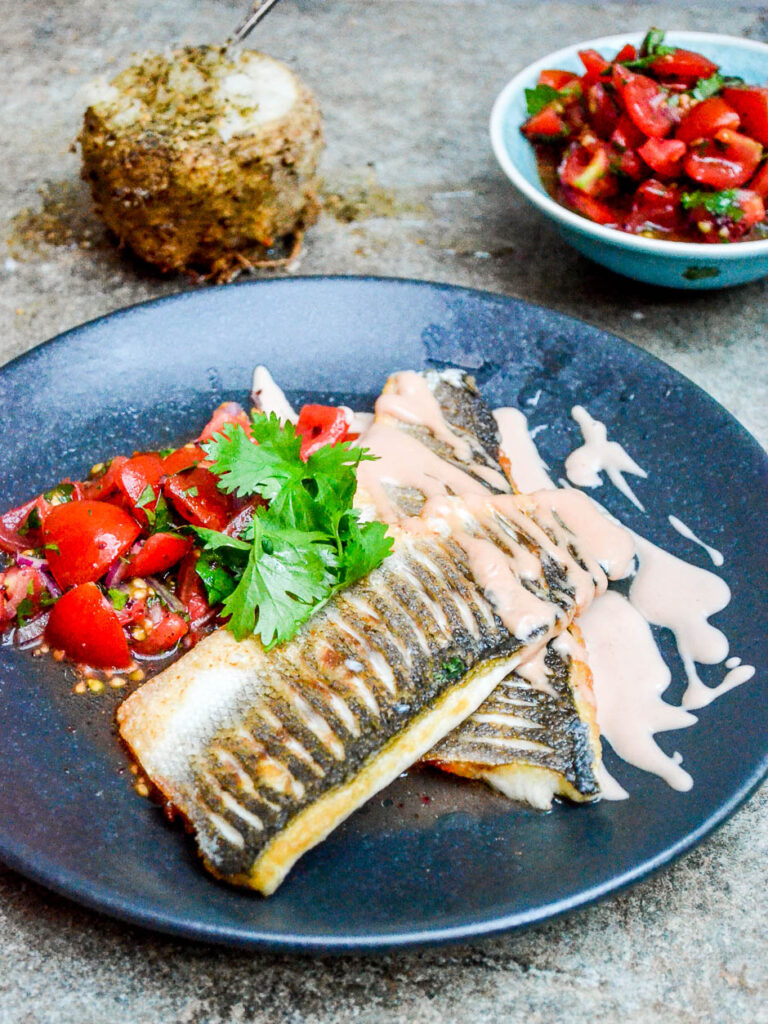
A zingy, herby tomato salad – or salsa if you like, given its juiciness – is also a brilliant match with the fried fish. Lemon and sumac add extra depth of flavour.
A little trick for extra tasty tahini sauce
And to give the meal a little substance: A simple but incredibly tasty tahini sauce. In place of the more common water or yoghurt, I use the juices of tomatoes to thin the sauce.
I learned this trick from an Israeli friend of mine when she visited me in Norway, and since I’ve not looked back. It brings that little je ne sais quoi which elevates the tahinin sauce just that little bit ahead of all other tahini sauces.
A few tips on substitutions
You may substitute any white fish of your choice for the sea bass, though cooking time may vary. Other fish may also be better served by other cooking methods. Use your own experience and judgment!
To complete the meal, all you need is some fresh, crusty bread alongside. I like sourdough. Baked or steamed potatoes and vegetables also work very well.
Or you can serve it as is, for a lighter meal, perhaps with a big bowl of salad on the side. Add a few grains or legumes to the salad if you’d like it to be more filling.
The recipe serves 3-6, depending on what else you decide to offer up.
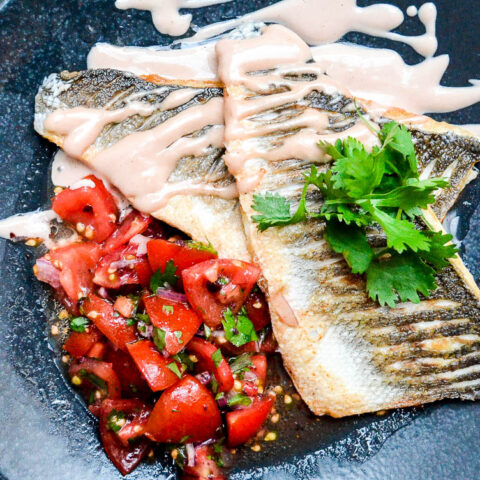
Sea bass with tahini sauce and tomato salad
Ingredients
- 800 g sea bass fillet, or other white fish of your choice, I prefer skin on
- olive oil, for frying the fish
- salt and pepper
Tomato salad
- 600 g cherry tomatoes, cut into 1 cm cubes
- ½ red onion, finely chopped
- 15 g coriander (cilantro), finely chopped
- 2 tsp sumac, optional
- 3 Tbsp lemon juice
- 3 Tbsp extra virgin olive oil
- salt and pepper
Tahini sauce
- 60 ml juice drained from the cherry tomatoes, see instructions
- 60 g tahini
- salt and pepper
How I make it
- Prepare the tomatoes: Mix the cherry tomatoes, red onion and a little salt. Set aside for 20-30 minutes.
- Make the tahini sauce: Drain 60 ml/¼ cup of the juices from the tomatoes. Mix the tomato juice with tahini and 1 Tbsp lemon juice. Season (if necessary).
- Finish the tomato salad: Mix the tomatoes and onion with the coriander, sumac, 2 Tbsp lemon juice and extra virgin olive oil.
- Fry the fish: When everything else is ready, make small incisions through the skin side of the sea bass at about ½ cm (⅕ in) intervals. This allows the fish to cook more evenly and prevents it from curling up too much. Season the fish and heat 2-3 tbsp olive oil in a non-stick pan over medium heat. Fry the fish, skin side down, until almost cooked through, around 2-3 minutes. Use your fingers or a utensil to keep the fish down until it relaxes and no longer curls up. When almost cooked through, take off the heat and flip the fish. Leave to finish cooking in the residual heat, this usually takes less than a minute.
- Serve immediately, skin side up, with the tahini sauce, tomato salad and any other sides you’re serving.
Tips & notes
Using other types of white fish
- If using a large piece of white fish, such as cod, I prefer to bast it in a little olive oil before roasting it in a 160 C (320 F) oven until it flakes, anything from 5-6 to 10-12 minutes or more, depending on the size of the fillets and their temperature when going into the oven.
- If your fillet has the skin on, fry as per main instructions above for three minutes with skin side down, then flip and transfer to the oven (remembering to transfer the fillets to a roasting pan if your pan isn’t oven proof).
How to fillet sea bass
- If you’ve bought whole sea bass and wonder how you can turn your beautiful fish into fillets, I found this video by Jamie Oliver very instructive. It’s actually not difficult at all if you’re a bit careful!


